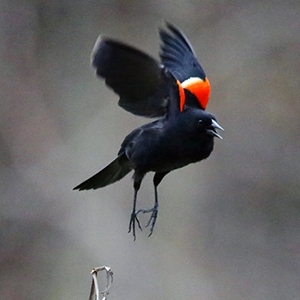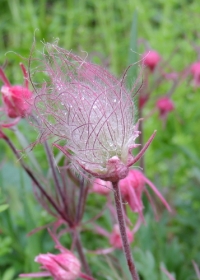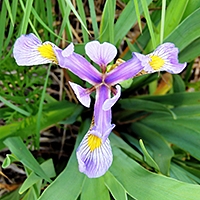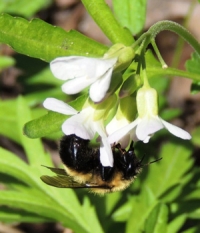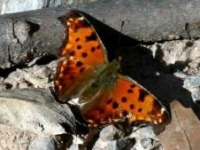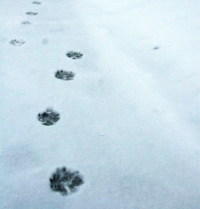
Red Wings and Early Spring
For those of you who may not know, we have an organization-wide phenology competition every year to document the first of year (FoY) Red-winged Blackbird, Eastern Chipmunk, Mourning Cloak, and Butler's Gartersnake. The documentation of these four species typically signifies the arrival of spring and the dismissal of winter. This year's unseasonal warm weather, however, has a resulted in an uncomfortably early kickoff.
Research Highlight: Share your Urban Ecology Center wildlife sightings - there's an App for that!
Many of the Urban Ecology Center staff, volunteers and community members love taking photographs of the wildlife and vegetation in our parks. Who can discount the natural beauty of an unfurling fiddlehead or the pure white flower of the bloodroot? Many photographers find the natural world a source of limitless inspiration for their art. Others take photographs to record phenological observations. Phenology is the study of the timing of natural events, such as the first bud break, the first appearance of a migratory animal, the making and breaking of ice on lakes and more. The first appearance of the nodding head of the yellow trout lily is not only photogenic, but it is also a harbinger of spring. The date of bloom is a phenological record and here at the Center, we like to record these observations. In fact, there is a long standing—and fierce—competition to observe the first chipmunk of the year.
Announcing the Arboretum Docent Program!
With the addition of 25 acres of land along the Milwaukee River and Oak Leaf Trail to the existing 15 acres of restored natural lands of Riverside Park, we are gearing up for adventures and exploration of our new 40-acre Milwaukee Rotary Centennial Arboretum. You are invited to join in the fun through our new volunteer docent program. This training will prepare you to lead other nature and outdoor enthusiasts in learning about the Arboretum.
June Phenology 2013: Fantastic Flowers
Flowers are fascinating! They adapt to a wide variety of growing conditions, provide food for insects, and intrigue us with the origins of their names. As we exit June and summer hits its stride, take a look at this overview of the flowers (like the blue flag iris to the right) that you can find right now!
May Phenology: 2013 Re-emergence of Frogs, Bees and Flowers
Every new day in May brings out plants and critters that re-emerge after their winter absence. Warmer temperatures and longer days allow plants to re-emerge from soil and leaves and flowers to burst forth from trees. These provide food for insects, which are food for frogs, birds and mammals and so on. Here are some things to look for outside in May.
April Phenology 2013: Spring has Sprung
For some, the word Phenology is a relatively elusive word that doesn't immediately bring anything to mind. Considering that it's derived from Greek word phaino, meaning to show or appear, you might guess that spring is a great time to begin practicing this fun activity. April is an important month for Phenology because it marks the appearance of so many friends of field and forest that seem long lost over the cold winter months.
March Phenology 2013: Sap, Birds & Ephemeral Flowers
Spring is getting close, and important changes are already happening. You've probably already noticed that it's getting warmer and the days keep getting longer. Temperature and light are responsible for many changes to the landscape, which make spring a fun and beautiful season to track Phenology. Let's talk about these changes.
CSI Phenology Phun
A good CSI detective needs tools, clues and evidence to try and recreate a crime scene. In the case of phenology, you also need tools, clues and evidence to recreate an accurate picture of an ecosystem.
February Phenology
Water. Simply put: it sustains life. Humans can live without it for only three days before perishing. Its unique properties allow an insect to walk on top of it and a pelican to dive through it. It drives weather and moderates local conditions (cooler by the lake).
Because water is so integrated in earth's systems, it makes a great phenological tool, particularly in winter when it takes the form of snow and ice as you will see in this month's phenology blog entries:
Photo Phenology
Did you know that we are visually documenting the changing landscape in the Menomonee Valley? Over time, we will be able to see big changes occurring in this area including the planting and growth of the new 24-acre park in the Valley.
Phenology is the study of plant and animal life cycle events and how these are influenced by changes in the environment. In our monthly Photo Phenology walks, we use photography to document those changes so that we can refer back to them and compare the changes year after year.
Copyright © 2023 The Urban Ecology Center

